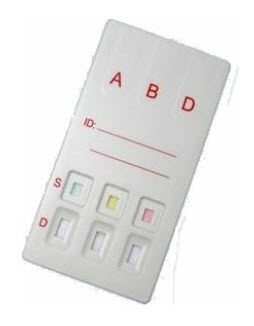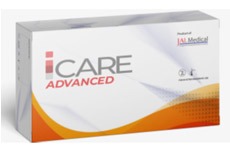Understanding blood types, specifically the ABO and RhD systems, is essential in healthcare for various medical procedures. However, the process of ABO and RhD blood typing comes with its challenges. In this article, we’ll delve into these challenges, explore solutions, and highlight the crucial role of ABO and RhD rapid tests in overcoming these obstacles.
Challenges in ABO and RhD Blood Typing
1. Mixed-Field Agglutination:
- Mixed-field agglutination occurs when there is a mixture of blood cell populations with different blood types, making it challenging to accurately determine the patient’s blood type.
2. Weak or Variant Antigen Expression:
- Weak expression of antigens or the presence of variant antigens can lead to difficulties in identifying the correct blood type, posing challenges in blood typing accuracy.
3. Time Constraints in Emergency Situations:
- Traditional laboratory methods may take time to deliver results, and in emergency situations, this delay can be critical for patient care, especially in scenarios requiring immediate blood transfusions or other interventions.
4. Resource Limitations in Remote Areas:
- Access to advanced laboratory facilities for precise blood typing may be limited in remote or underserved areas, hindering the timely management of medical situations requiring blood typing information.
Solutions to ABO and RhD Blood Typing Challenges
1. Advanced Laboratory Techniques:
- Implementing advanced laboratory techniques, such as molecular methods like PCR-based testing, can enhance the accuracy of blood typing, especially in cases of mixed-field agglutination or weak antigen expression.
2. Educational Initiatives for Healthcare Professionals:
- Providing continuous education and training to healthcare professionals ensures they are well-equipped to navigate challenges in blood typing. This includes staying updated on the latest advancements and techniques.
3. Development of ABO & RhD Rapid Tests:
- The introduction of ABO and RhD rapid tests addresses the time constraints in emergency situations. These tests offer quick and reliable results, allowing healthcare providers to make immediate decisions for patient care.
4. Mobile Health Units for Remote Areas:
- Implementing mobile health units equipped with ABO and RhD rapid testing capabilities can bridge the gap in resource limitations, particularly in remote areas. This ensures that even in less accessible regions, timely blood typing information is available.

The Role of ABO Rapid Test and RhD Rapid Test Kits
1. ABO Rapid Test:
- ABO blood tests focus on quickly determining an individual’s blood type within minutes. These tests typically involve a simple procedure, such as applying a small blood sample to the ABO blood grouping kit, and can be performed in various healthcare settings, including emergency rooms and clinics.
- Advantages:
- Immediate results for quick decision-making.
- Ease of use, requiring minimal training.
- Crucial in emergency situations where time is of the essence.
- Applications:
- Emergency blood transfusions.
- Preoperative assessments.
- Rapid patient triage.
2. RhD Rapid Test Kit:
- RhD rapid tests specifically focus on determining whether an individual is RhD positive or RhD negative. Like ABO rapid tests, they offer quick results, aiding healthcare providers in making timely decisions related to patient care.
- Advantages:
- Rapid identification of RhD status.
- Convenient and reliable in emergency scenarios.
- Valuable in managing pregnancies to prevent Rh incompatibility complications.
- Applications:
- Emergency situations require immediate blood typing.
- Prenatal care to assess Rh compatibility.
- Routine blood typing when time is a critical factor.

Conclusion: Navigating Blood Typing Challenges with Rapid Tests
Challenges in ABO and RhD blood typing are diverse and can impact patient care significantly. However, advancements in technology, education, and the development of ABO and RhD rapid tests provide solutions to navigate these challenges effectively.
ABO and RhD rapid tests emerge as crucial tools in the healthcare arsenal, offering quick and reliable blood typing results. These tests play a pivotal role in emergency situations, preoperative assessments, and prenatal care, ensuring that healthcare providers can make informed decisions promptly.
As we continue to address challenges in blood typing, the integration of advanced techniques and rapid testing technologies contributes to enhanced patient outcomes. Whether in well-equipped laboratories or remote healthcare settings, the role of ABO and RhD rapid tests is undeniable in the journey of accurate and timely blood typing.
Frequently Asked Questions About ABO and RhD Blood Typing
Q1: What is mixed-field agglutination in ABO and RhD blood typing?
Mixed-field agglutination occurs when there is a mixture of blood cell populations with different blood types, making accurate blood typing challenging.
Q2: How do ABO and RhD rapid tests address time constraints in emergency situations?
ABO and RhD rapid tests provide quick results, allowing healthcare providers to make immediate decisions in emergency scenarios, such as blood transfusions or patient triage.
Q3: What are the advantages of ABO rapid tests?
ABO rapid tests offer immediate results, are easy to use, and are crucial in emergency situations where quick blood typing is necessary for patient care.
Q4: How do RhD rapid test kits contribute to managing pregnancies?
RhD rapid tests quickly determine Rh status, aiding in the management of pregnancies to prevent Rh incompatibility complications.
Q5: In what scenarios are mobile health units with ABO and RhD rapid testing capabilities beneficial?
Mobile health units are valuable in remote areas, ensuring timely blood typing information is available, even in resource-limited settings.

